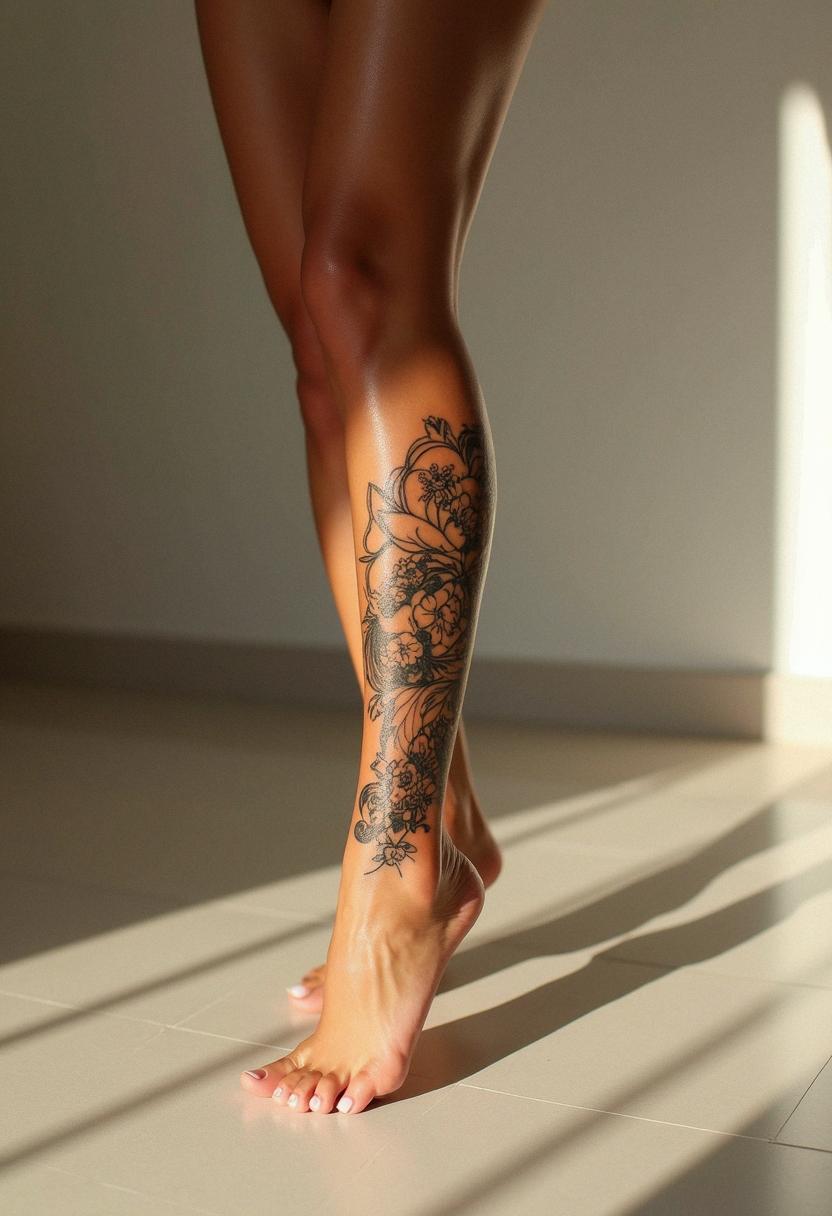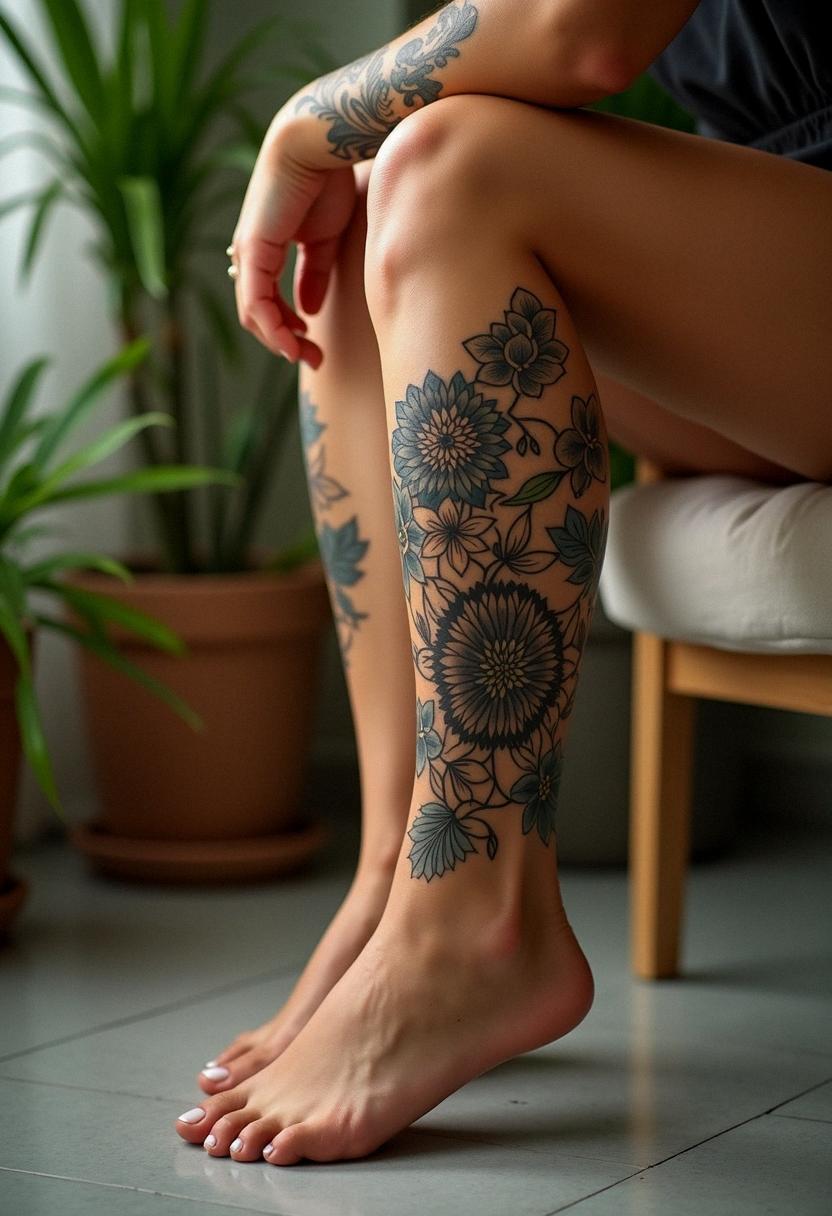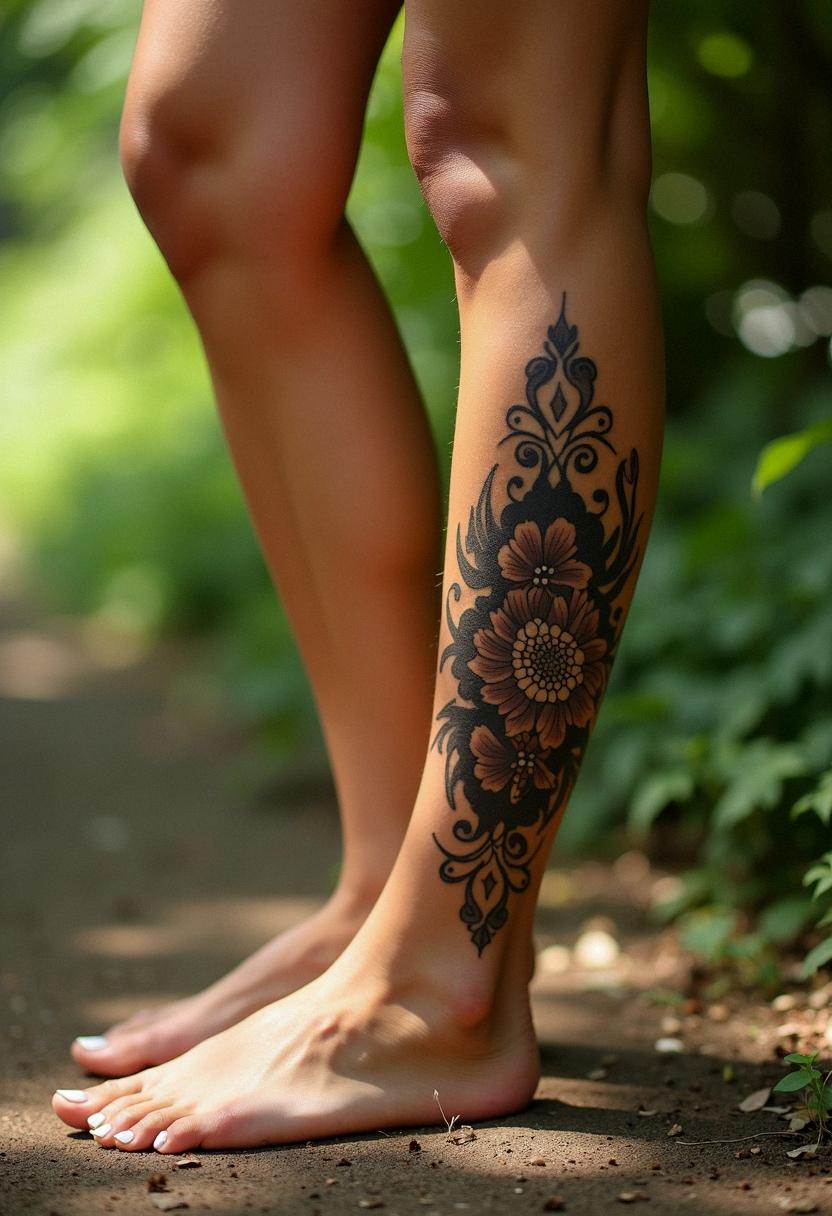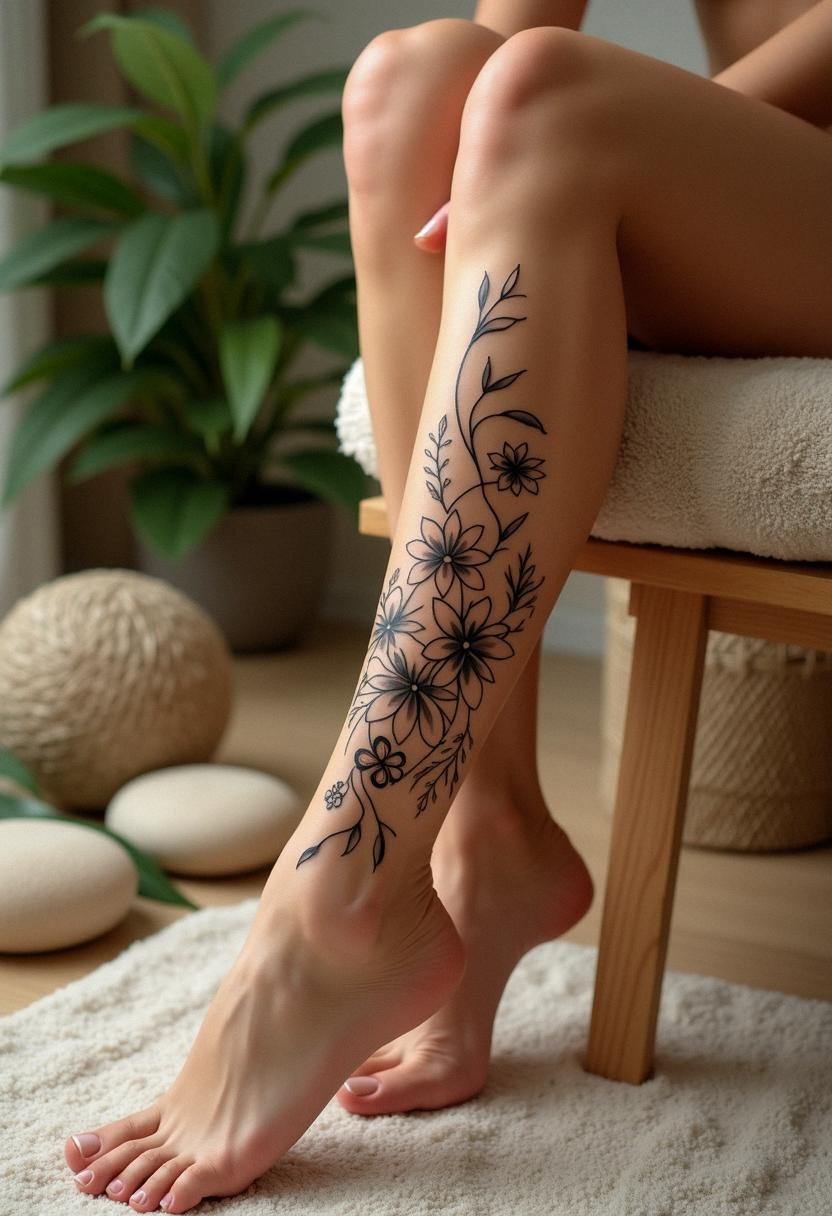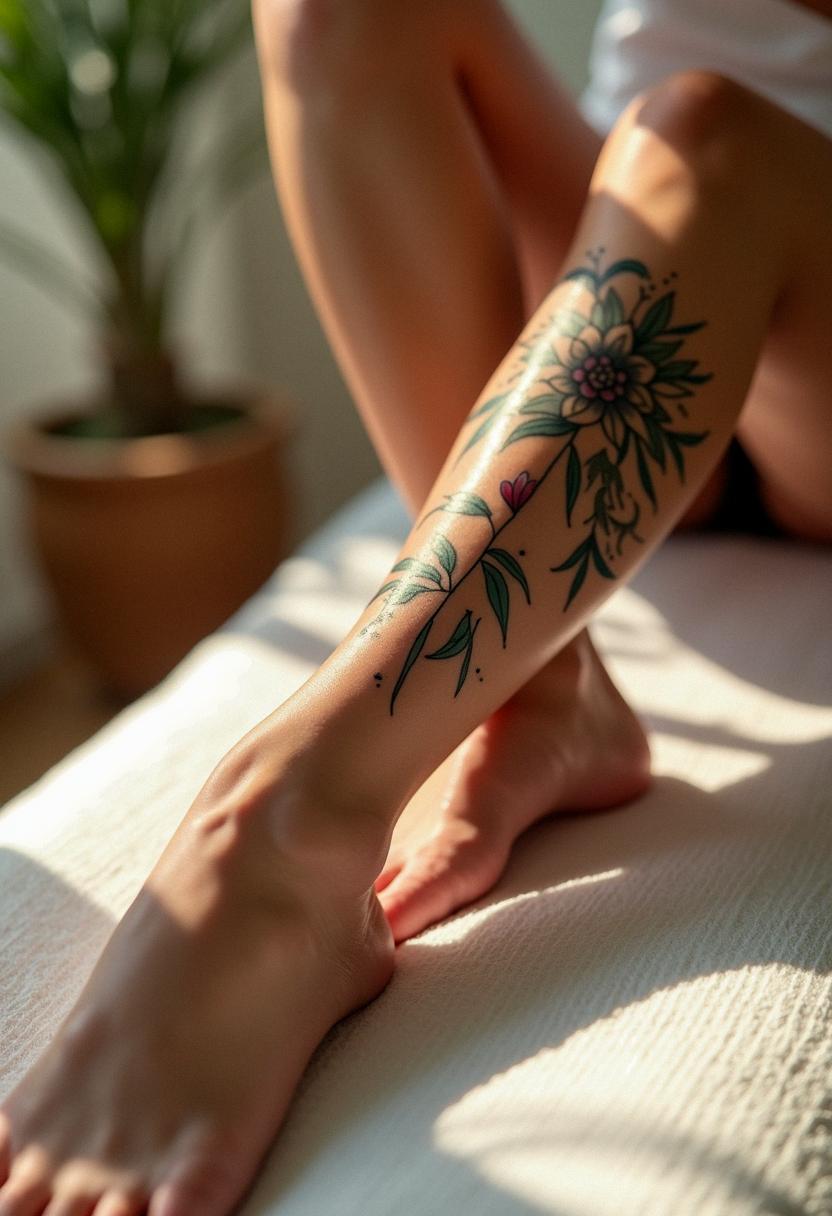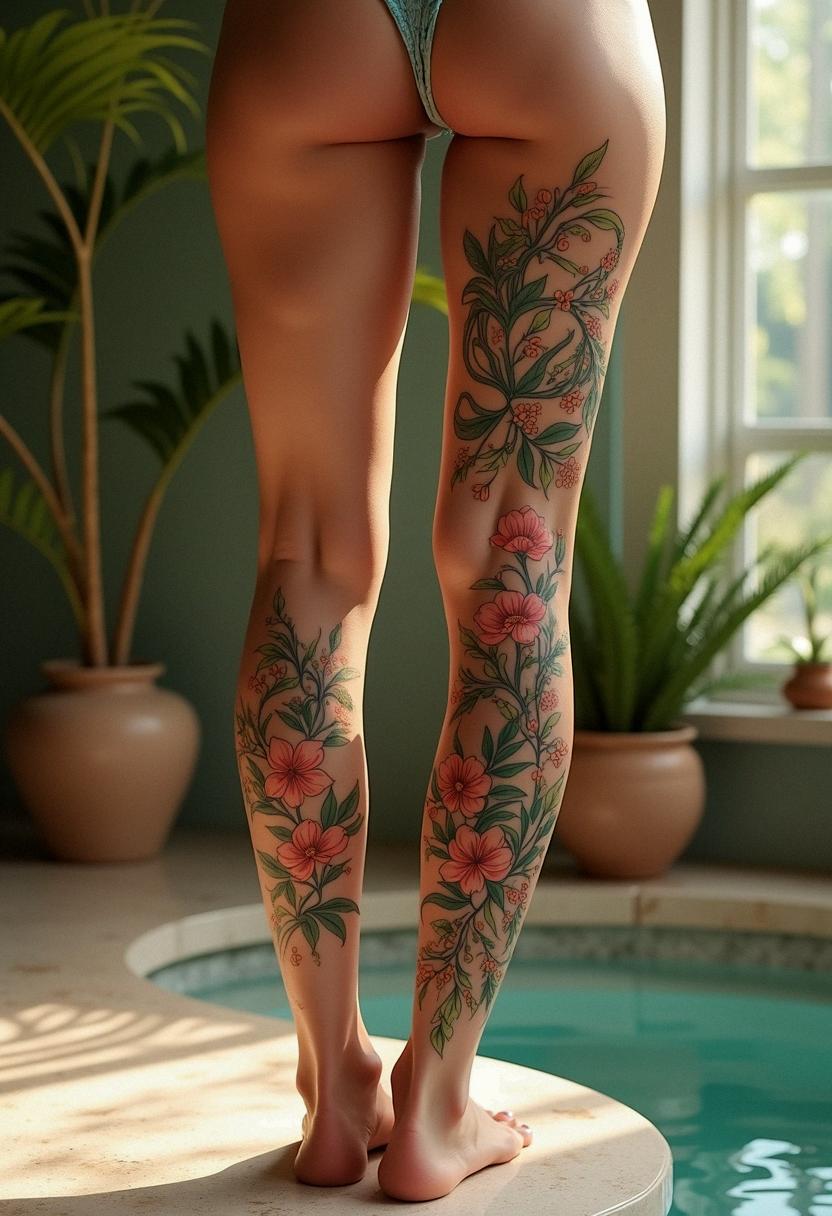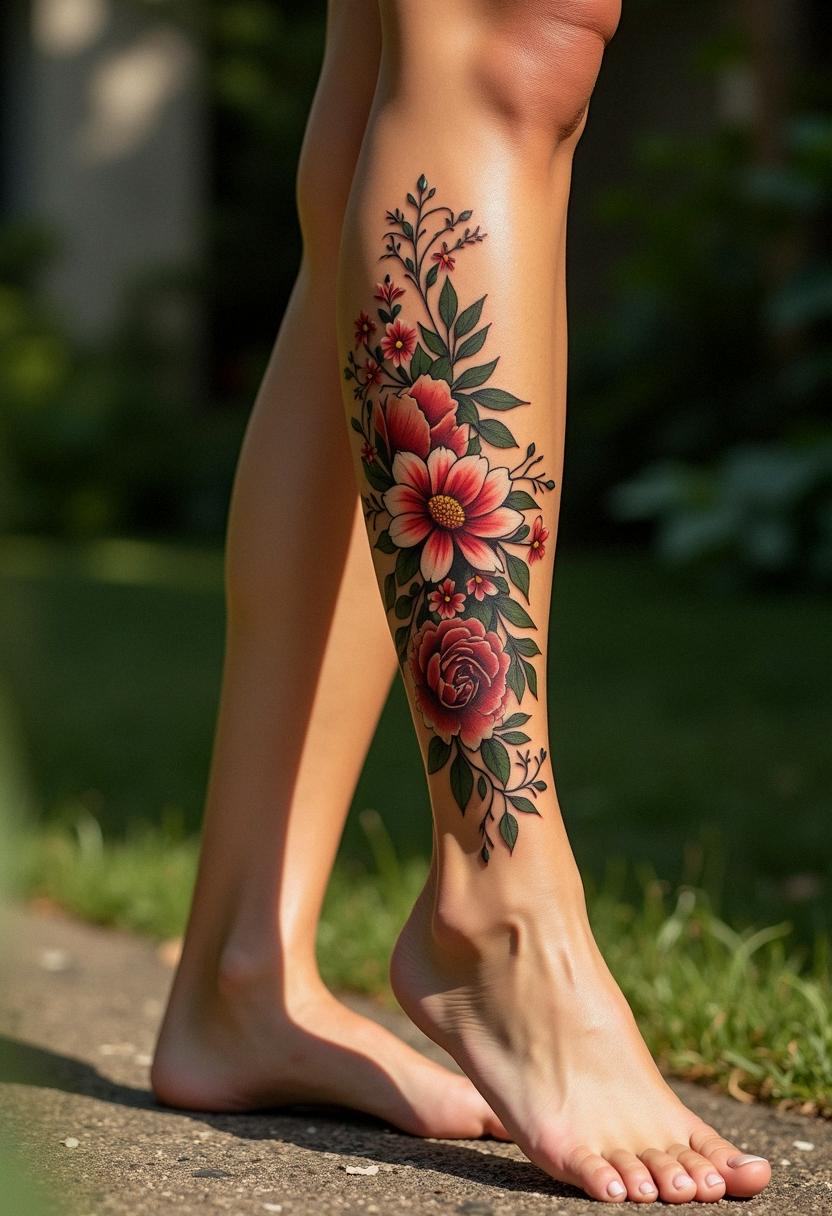Leg tattoos have become a striking medium for personal expression, embodying art, sentiment, and heritage in ways that resonate deeply with individuals from all walks of life. Leg tattoos offer a vast canvas that allows canvassing of intricate designs—from subtle, delicate patterns to bold, statement-making pieces. They serve not only as body art but also as historical narratives, cultural symbols, and windows into personal journeys. Many enthusiasts see their leg tattoos as both an aesthetic enhancement and a conversation starter, merging beauty with storytelling. This versatile form of tattooing appeals to both first-timers and seasoned collectors, inviting each wearer to showcase a part of their identity through art that is as unique as their fingerprint. The sheer diversity of designs and styles reflects the ever-evolving landscape of tattoo culture, where creativity is limitless and personal significance is paramount. From the rich details of ancient symbolism to modern abstract imagery, leg tattoos invite you to explore themes that resonate with deep personal meanings while also making a bold external statement.
Overview of Leg Tattoos
Leg tattoos are much more than skin art; they are bold statements of individuality permanently etched onto one of the body’s largest canvases. I find it fascinating how leg tattoos provide ample space for creativity, letting artists and wearers experiment with detailed imagery, vibrant color schemes, and sweeping designs that tell a personal story. Whether you’re covering your calf, thigh, or extending a design from the ankle upward, leg tattoos allow for extensive artistic expression. You might choose to go for a full-sleeve style on your leg, or perhaps a single, striking motif that draws attention with its clever placement and use of negative space. As you grow into the tattoo culture, you see that leg tattoos adhere to a rich tradition filled with symbolism and modern innovation, making each design unique. I’ve noticed that many people see their leg as a journey, a timeline of their experiences, beliefs, and aesthetic tastes. This artistic form is a dynamic blend of classic influences and current trends, sprinkled with personal touches that make each tattoo a masterpiece of both past and present influence.
History and Evolution of Leg Tattoos
The history of leg tattoos is as intricate and layered as the designs themselves, rooted in traditions that span continents and millennia. Long before tattoos became a mainstream art form, different cultures used body ink as a means to symbolize status, celebrate rites of passage, or signify religious beliefs. Stories of warriors, spiritual leaders, and everyday citizens telling their own tales on their skin can still be traced today through the legends of leg tattoos. Over time, these markings evolved from modest symbols to elaborate art pieces that blend the ancient with the modern. I often muse about how these once-secret markers of tribal identity have transformed into a celebrated art form embraced by individuals worldwide. This evolution is evident in the transition from simple, monochromatic designs to intricate works of art often bursting with color and detail. The journey of leg tattoos reflects broader societal changes where acceptance and self-expression have merged, making the leg a vibrant, visible gallery of personal history and artistic rebellion. It isn’t just art—it’s a living, breathing testament to cultural evolution, continuously reinvented with every stroke of the needle.
Popular Leg Tattoo Designs and Styles
When it comes to leg tattoos, the array of designs is as expansive and diverse as the human imagination. Personally, I love how these tattoos can range from the elegantly minimalistic to the aggressively bold, adapting to trends while still preserving a timeless appeal. Many enthusiasts gravitate toward intricate floral patterns that twine beautifully along the curves of the leg, creating a natural flow that complements body contours. Others prefer tribal or geometric styles that pay homage to heritage and symmetry, striking a balance between rugged tradition and contemporary flair. I often find that realism and illustrative designs also dominate the scene, capturing lifelike portraits or vivid nature scenes that transform the leg into a moving narrative. This versatility means that whether you’re a fan of abstract art, fine line work, or vibrant, saturating hues, there’s a leg tattoo style that speaks directly to you. These designs do more than fill space; they celebrate individuality, capturing emotions and memories while simultaneously echoing modern trends and age-old symbolism.
Cultural and Symbolic Meanings Behind Leg Tattoos
The cultural and symbolic significance of leg tattoos runs deep, intertwining personal experiences with broader societal narratives. For many of us, tattoos are not just decorative; they encapsulate cherished memories, deep-seated beliefs, and even a sense of rebellion against conventional norms. Leg tattoos, in particular, often feature symbols that hark back to ancient traditions—think of motifs like mythical creatures, sacred geometry, or cultural icons that carry layers of meaning. I love how each piece tells a unique story: some wear their heritage proudly with designs inspired by ancestral art, while others use symbols as talismans, believing these images hold protective powers or bring good fortune. The leg, with its ample space for expansive designs, is an ideal location to carry a piece of one’s personal mythos. In many cultures, tattoos represent a rite of passage or a milestone event, turning the leg into a living chronicle of one’s life’s journey. Even as modern trends evolve, the deep-rooted symbolism embedded in these tattoos continues to evoke both introspection and admiration, bridging the gap between the ancient art of storytelling and modern self-expression.
Placement, Size, and Visibility Considerations
When you think about leg tattoos, considerations of placement, size, and visibility play a crucial role in determining both the impact and practicality of your tattoo. I often advise others to consider which part of the leg best conveys the sentiment of the design while aligning with lifestyle and future aspirations. Lower leg tattoos might be more visible and frequently seen, making them ideal for bold, statement designs, whereas thigh or calf placements offer a larger canvas for more detailed artwork while also being easily covered if need be. It’s fascinating how the leg, with its elongated shape, allows for a natural progression of a design—almost like a story unfolding in chapters from ankle to knee or beyond. I’ve seen that choosing the optimal size is equally vital; too small, and intricate details may be lost, but too large can overwhelm the natural contours of the leg. This delicate balance between artistic vision and practical visibility requires thoughtful planning. Keep in mind that color saturation and line details might vary depending on where the tattoo sits, so working closely with your artist is key to ensuring the design maintains its clarity and aesthetic appeal as time passes.
Pain Factors, Procedure, and Aftercare Tips
Diving into the world of leg tattoos also means preparing for the physical aspect of the process, which can vary significantly depending on the location, size, and intricacy of the design. I’ve learned that pain is a very individual experience—what feels like a minor nuisance to one person can be a more intense sensation for another. Generally, areas with less muscle and more bone, like the shin or ankle, might feel a bit more painful compared to the fleshier parts of the leg. Beyond the initial discomfort, the tattoo procedure is a fascinating journey in itself, combining art, precision, and a touch of bravery as you sit through a process that can last anywhere from a couple of hours to multiple sessions for more extensive designs. Aftercare is absolutely critical; keeping the area clean, moisturized, and out of direct sunlight is something I always emphasize to anyone sporting a new tattoo. Proper aftercare minimizes the risk of infection and helps preserve the vibrancy and clarity of the design over time. Following a strict regimen during the healing process is essential, and I often share that being proactive about aftercare is just as important as the initial artistic vision.
Choosing the Right Artist and Studio
One of the most critical steps in owning a successful leg tattoo is selecting the right artist and studio, as this choice can influence your entire experience and the final outcome of the piece. I always recommend doing detailed research when it comes to finding an artist whose style mirrors your vision, whether it’s bold traditional lines or intricate modern designs. The studio environment is equally important; a clean, reputable studio with a track record of stellar work, proper hygiene, and professional conduct is often a predictor of how well the tattooing process will go. From personal experience, you can tell that when an artist truly understands your idea, they bring warmth and assurance into the consultation, carefully discussing the design, placement, and anticipated pain levels. Their experience with similar canvases, especially on the leg with its diverse contours, helps in producing an artwork that not only meets expectations but also stands out in quality and longevity. I always urge readers to trust their instincts and ask for portfolios, read reviews, and even visit the studio beforehand, ensuring that the environment feels right and safe. A strong artist-client rapport is essential, transforming the process from a simple service into a collaborative piece of living art.
Trends Shaping the Future of Leg Tattoos
In a landscape where style and innovation constantly evolve, leg tattoos are witnessing dynamic trends that promise to reshape the future of body art. I find it exhilarating to see how modern technology, coupled with emerging artistic techniques, is pushing the boundaries of what we once considered the norm. Today, there’s a surge in hyper-detailed designs that integrate elements of digital artistry with traditional ink. Bold colors and intricate shading are being paired with minimalist backdrops to create pieces that are simultaneously vibrant and understated. More people are choosing leg tattoos as a platform for storytelling, where each design not only embellishes the skin but also conveys a layered narrative reflective of personal growth and cultural influences. Trends now lean towards customization, where artists utilize advanced equipment and creativity to engineer designs that are profoundly personalized yet trend-forward. I see this evolution as a testament to how leg tattoos have transcended their role as mere adornments to become sophisticated expressions of identity, an art form that grows alongside us while paying homage to its deep-rooted history.
Personal Stories and Testimonials
There is something incredibly heartwarming about sharing personal stories tied to leg tattoos, as each tattoo often marks a significant chapter of someone’s life journey. I’ve heard countless testimonials where individuals describe how a single tattoo on their leg transformed their self-image, serving as a daily reminder of resilience, love, or a milestone overcome. For some, a leg tattoo is a token of freedom—a piece that they proudly display, symbolizing independence and the courage to embrace change. Others recount heartfelt experiences where their tattoos became conversation starters, forging new friendships and bonding over shared tales of adventure and transformation. These personal narratives emphasize that leg tattoos are not simply aesthetic choices; they represent personal triumphs, deep connections, and sometimes, even a tribute to lost loved ones. Each story is a rich blend of emotion, artistic expression, and cultural affirmation—a mosaic of life experiences inked onto skin. I find these stories not only inspiring but also a powerful reminder that no art is ever just about looks; it’s about the spirit and soul behind every line and shade.
Practical Tips for Maintaining Your Leg Tattoo
Maintaining the beauty and longevity of your leg tattoo is as vital as the initial design and placement, and there are several practical tips that can help ensure your piece remains vivid and sharp for years to come. I always say that the first step toward preservation is excellent aftercare immediately following the tattooing process: keep the area clean, avoid excessive moisture, and use the recommended ointments. Once your tattoo has healed, it’s important to continue caring for it by keeping the skin moisturized, protecting it with sunscreen whenever you’re outdoors, and avoiding harsh chemicals or exfoliants that could erode the integrity of the ink. Consistency is key; regular moisturizing helps maintain the elasticity and brightness of the tattoo, while periodic professional touch-ups can prevent the design from fading. Some folks choose to incorporate their tattoo care routine into broader skincare habits, making sure to eat healthily, stay hydrated, and exercise—everything that contributes to healthy skin. The maintenance of leg tattoos, I’ve observed, is an ongoing journey of care and respect for the art you carry. Remember, a tattoo is an investment not just in art, but in a lifestyle where self-expression and skin care go hand in hand.

